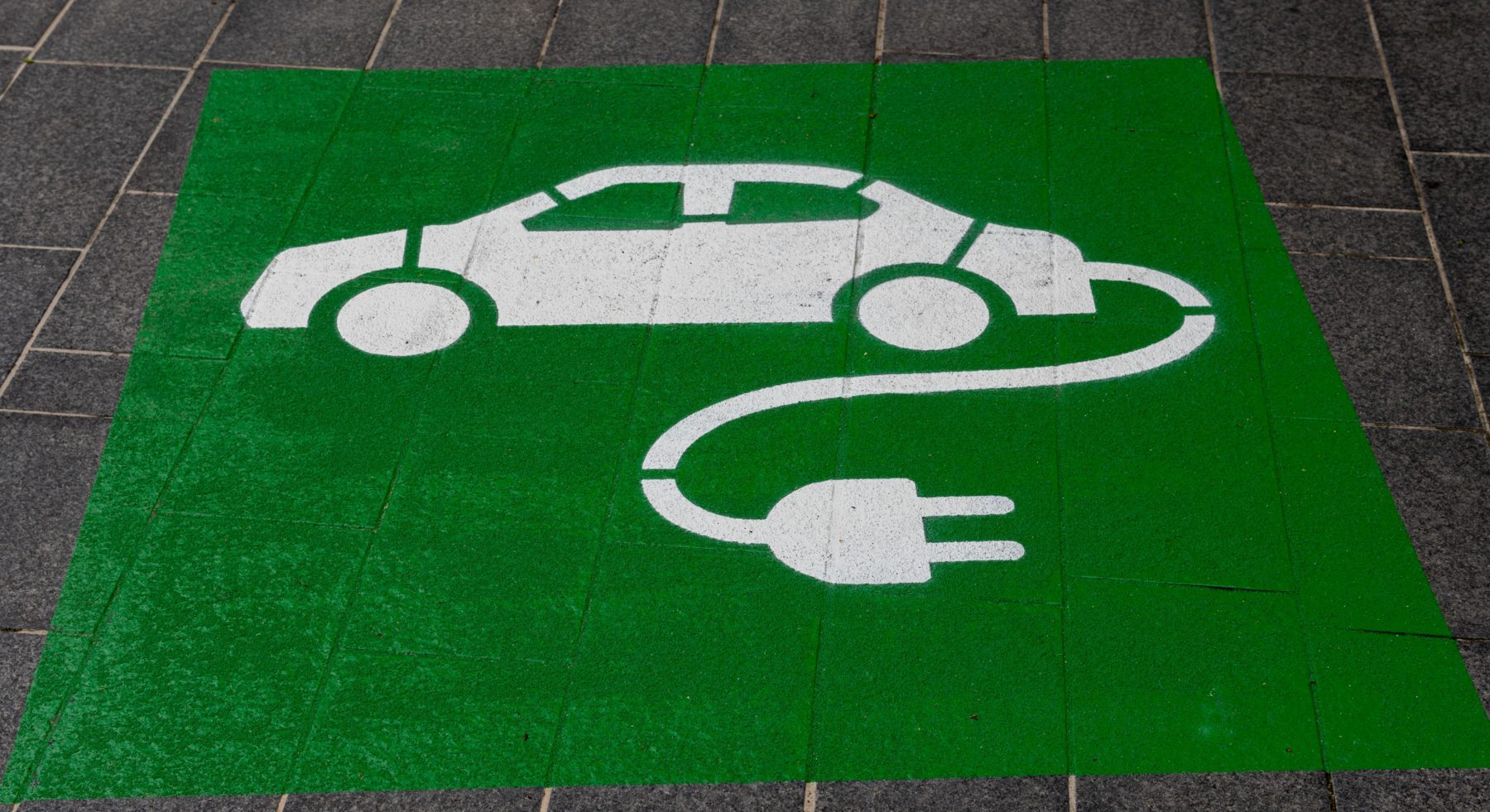
Low-carbon transitions – the socio-technical dynamics of changes we must make
Limiting climate change to ‘well below’ 20C will require deep transitions in electricity, mobility, food, heating, and industrial systems. These low-carbon transitions are not only about new technologies, but also about changes in user practices, cultural discourses, policies and institutions, infrastructure, and business models. Since low-carbon transitions result from interactions between firms, consumers, policymakers, wider publics, and NGOs, the dynamics are often labelled as ‘socio-technical’
In the past two decades, scholars have developed a socio-technical transitions framework, which initially mobilised ideas from evolutionary economics, neo-institutional theory, and sociology of innovation (Geels, 2002, 2020; Smith et al., 2005) to conceptualise the co-evolution of technologies, markets, institutions, social networks, and learning processes, and subsequently also incorporated ideas from political science, discourse theory, and business studies to address conflict, power struggles, cultural meanings, and company strategies (Rosenbloom et al. 2016; Kern and Rogge, 2018; Köhler et al., 2018).
Figure 1 schematically portrays the Multi-Level Perspective, which conceptualises the socio-technical dynamics of low-carbon transitions as multi-dimensional struggles between emerging low-carbon niche-innovations and existing socio-technical systems, which are shaped by exogenous ‘landscape’ developments (such as wars, demographics, macro-economics, macro-ideological and geo-political trends).
Existing socio-technical systems, like the one organised around auto-mobility, have been around for many decades and are deeply entrenched and stabilised through multiple lock-in mechanisms such as sunk investments (in factories, infrastructures, skills), regulations and subsidies that create uneven playing fields, resistance to change from vested interests, taken-for-granted user practices, and views on normality (Klitkou et al., 2015; Seto et al., 2016). Innovation within existing systems tends to be incremental, giving rise to trajectories of gradual improvement (represented with horizontal arrows in Figure 1).
Since incremental changes are insufficient to address climate change, low-carbon transitions require the development and diffusion of low-carbon innovations, which substantially deviate from existing systems in technical, social, business, or infrastructural dimensions. Table 1 provides some examples from three climate-relevant systems. These innovations face uphill struggles against deeply entrenched systems and vested interests.

Table 1: Examples of low-carbon innovations in mobility, agri-food, and energy systems
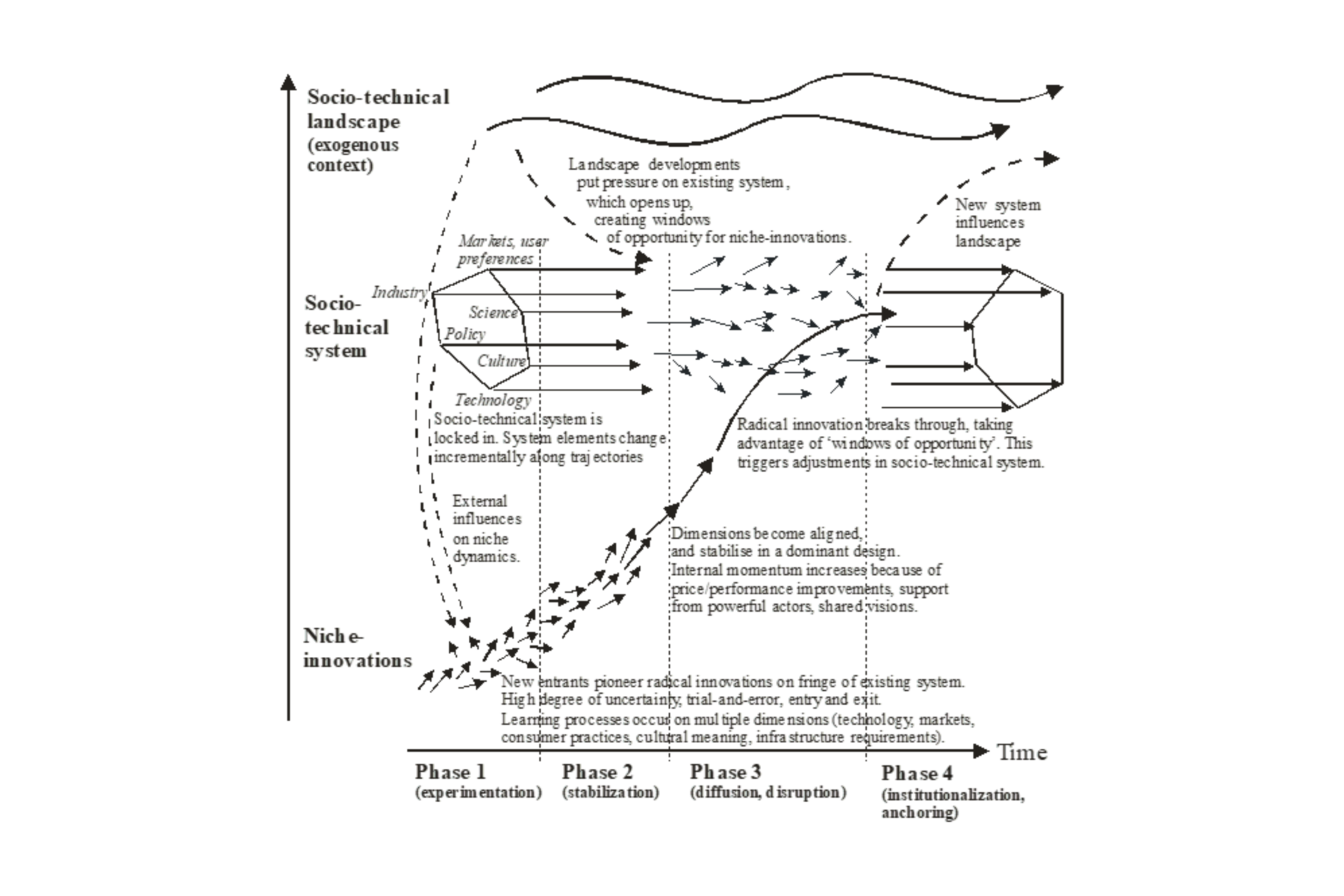
Figure 1: Multi-level perspective on socio-technical transitions (Geels, 2019: 191)
Since transitions are long-term processes (40-50 years), it is useful to distinguish different phases with characteristic processes. In the first phase, radical innovations, which deviate from existing systems, emerge in small peripheral niches such as R&D projects or specialized application domains, which provide a degree of protection for pioneers, activists, or entrepreneurs to nurture and develop their innovations (Kemp et al., 1998; Smith and Raven, 2012). Social networks are small, unstable, and fragile. Innovators face many (technical, market, or regulatory) uncertainties, and engage in experiments and learning processes to develop and articulate technologies, markets, cultural meanings, and policy requirements.
In the second phase, radical innovations enter small market niches, which provide resources for further development and specialisation. Innovations stabilise into dominant designs, which reduce uncertainties and attract more new entrants. Early users adopt the innovation, which increases its visibility and may galvanise public debates between proponents and opponents. Radical innovations may long remain stuck in small market niches, especially if the existing system remains relatively stable.
In the third phase, niche-innovations diffuse into mainstream markets, where they compete head-on with the established system. On the one hand, diffusion depends on niche-internal processes such as price/performance improvements, cultural enthusiasm about the innovation, increasing consumer demand, the development of complementary technologies, and new policies that tilt the playing field (through regulations, financial incentives or infrastructure investment). On the other hand, external landscape pressures may destabilise the existing system, leading to tensions that create windows of opportunity for the diffusion of niche-innovations (Turnheim and Geels, 2012). Struggles and conflicts are common in the third phase as incumbent actors recognise the threat and resist low-carbon transitions through political lobbying against stronger policies (Lee and Hess, 2019; Ford and Newell, 2021). They may also use shocks like the Ukraine war to argue for new fossil fuel projects or delays in low-carbon transitions.
The fourth phase is characterized by the creation and institutionalisation of a new socio-technical system as broader adjustments are made in infrastructures, regulations, and views on normality. The old system declines, which may lead to painful adjustment processes as firms shrink and people lose their jobs. Research on ‘just transitions’ aims to identify effective strategies (e.g., compensation packages, early retirement schemes) for mitigating these socio-economic disruptions (Mayer, 2018).
Low-carbon transitions are in different stages for different systems and countries. They have progressed to the third phase in the UK electricity system where renewable electricity technologies, which diffused rapidly in the 2010s (Figure 2), accounted for 39% of electricity generation in 2019 (Geels and Turnheim, 2022). Combined with a shift from coal to gas and a reduction of electricity demand (due to efficiency innovations in appliances and lighting), UK greenhouse emissions from electricity decreased by 71% between 1990 and 2019.
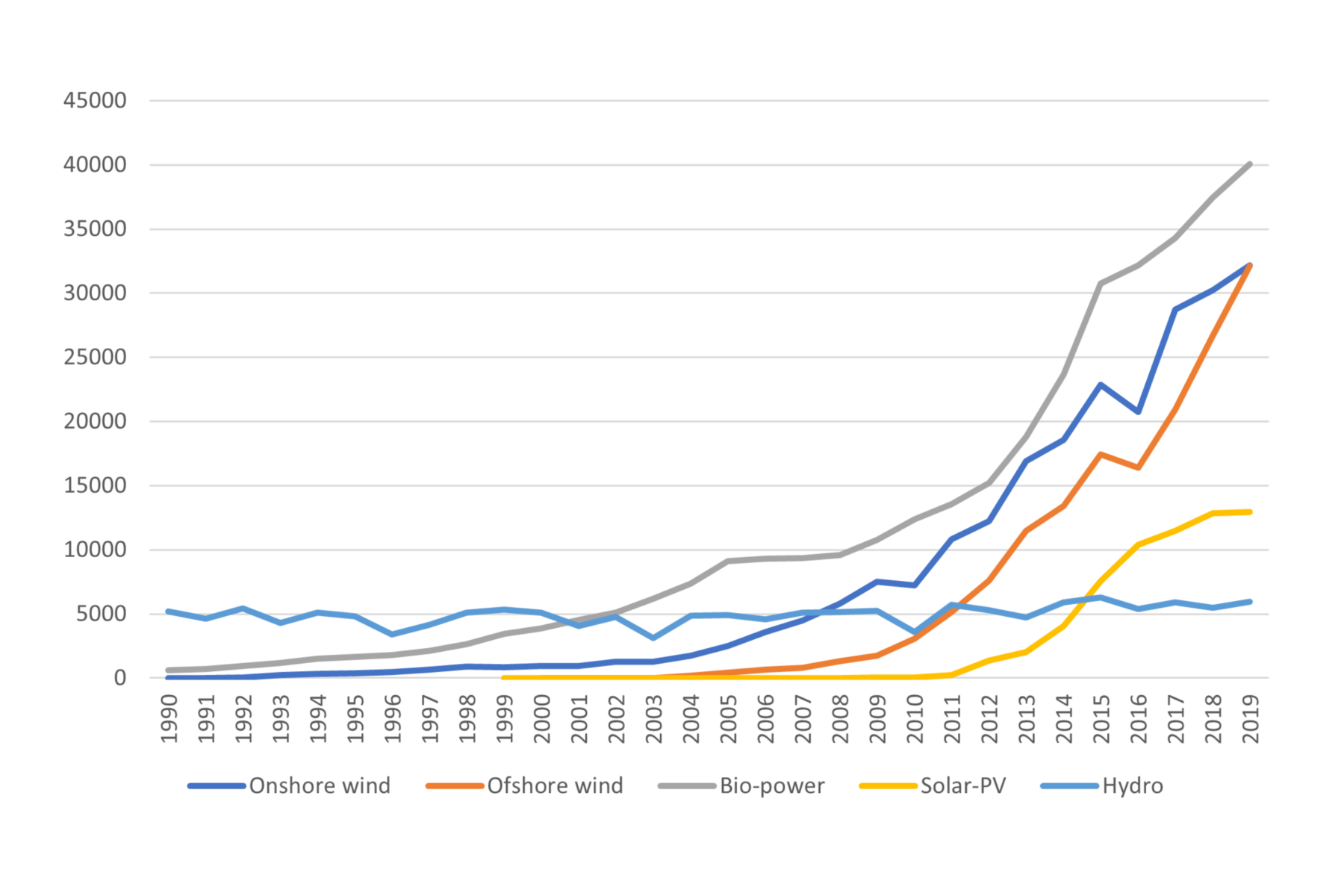
Figure 2: Electricity generated from renewable sources in GWh, 1990–2019 (constructed using data from the Digest of UK Energy Statistics; Electricity Statistics; Renewable sources; Table 6.6.1)
They are beginning to unfold in the passenger mobility system, where the diffusion of different kinds of electric cars (Figure 3) cumulatively reached 20.8% of all UK passenger car sales in 2020 (Geels and Turnheim, 2022). Other niche-innovations like car sharing or mobility-as-a-service have remained small, however, implying that the transition is more about modular substitution than deep system change. Cycling increased substantially in some cities like London and Brighton, but in 2019 accounted for only 0.7% of all passenger kilometres.
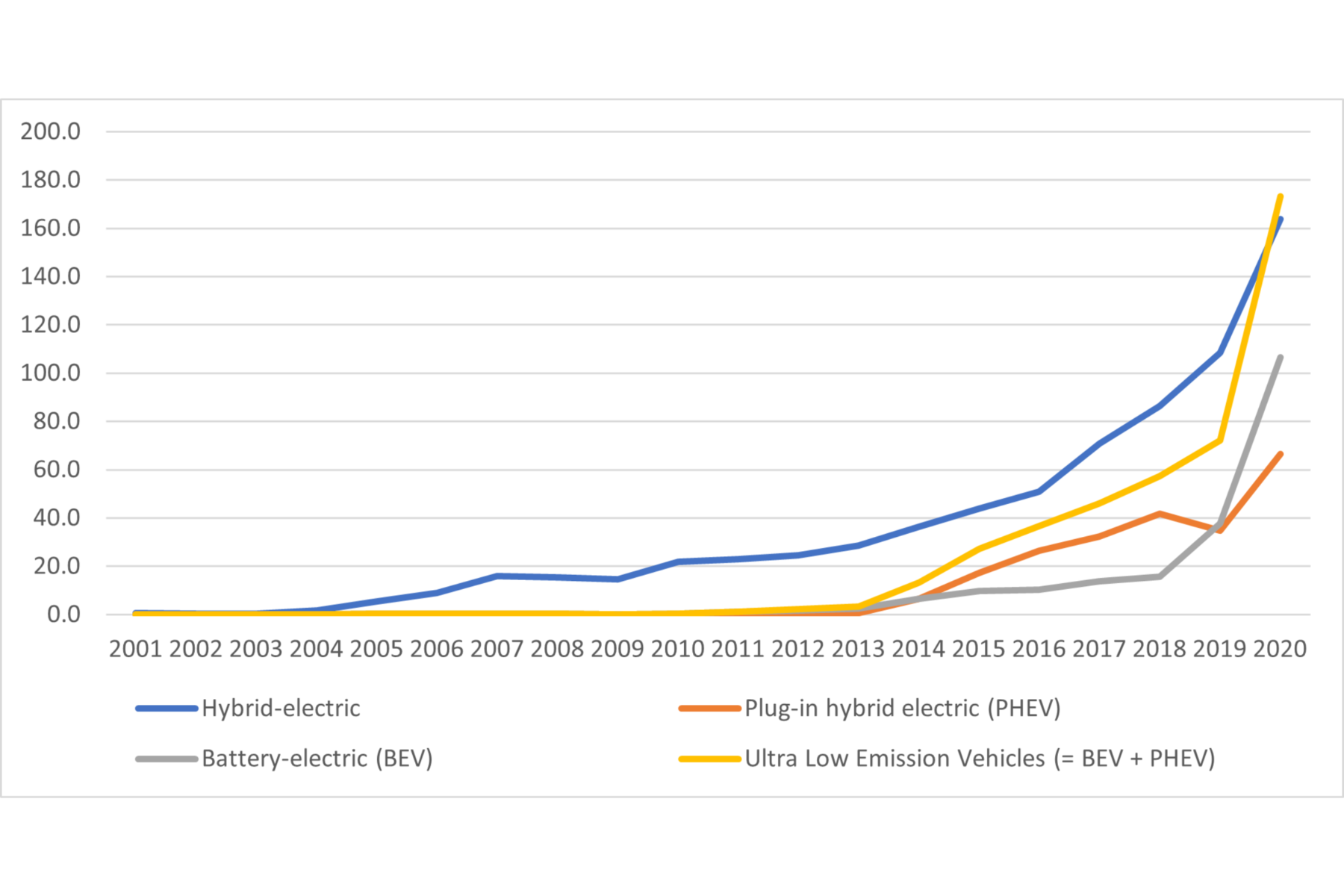
Figure 3: Annual electric car sales in Great Britain (in thousands), 2001–2020 (constructed using data from Department for Transport Statistics; Vehicle Statistics dataset; table VEH0253)
In the UK heat and building system, the low-carbon transition has stagnated due to opposition from volume housebuilders against the 2006 zero-carbon homes policy (which was scrapped in 2015) and the poorly designed 2013 Green Deal policy that led to a collapse in the installation of key insulation measures (Figure 4). The absence of an effective governance framework, limited demand from consumers, and resistance from volume housebuilders culminated in a 6% increase of greenhouse gas emissions between 2014 and 2019 (Geels and Turnheim, 2022).
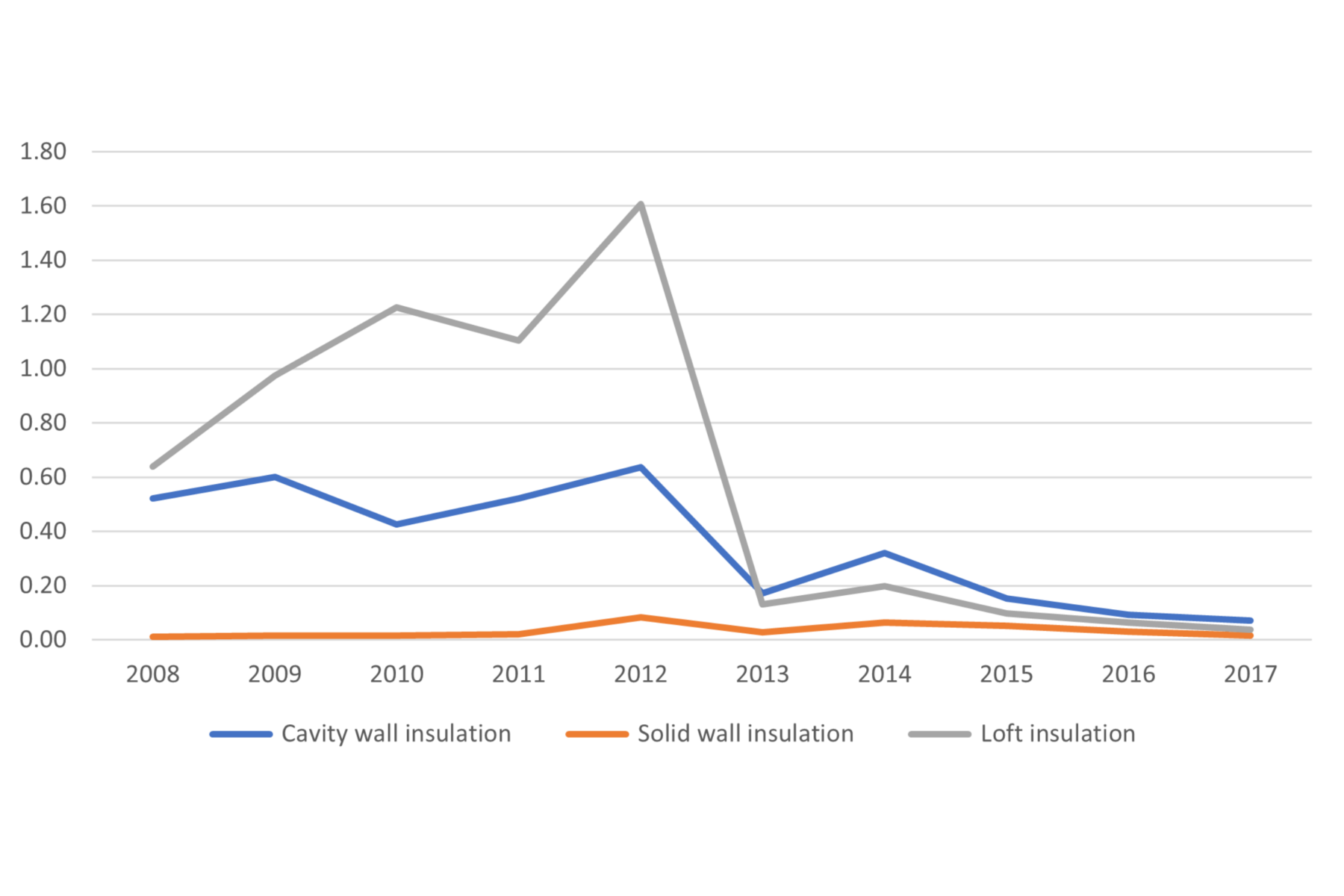
Figure 4: Delivery rates of key insulation measures in UK houses, in millions of installations (constructed using data from the Committee on Climate Change, 2018)
The social sciences are crucial to analyse low-carbon transitions because these processes ultimately depend on the perceptions, interests, strategies and (inter)actions between firms, policymakers, consumers, and civil society actors. Combining insights from multiple disciplines, the Multi-Level Perspective offers a ‘big picture’ framework to analyse how these multi-actor interactions shape the struggles between low-carbon innovations and existing systems. There is no guarantee that niche-innovations win these struggles and progress beyond early phases because setbacks, resistance, unintended consequences, or external shocks may delay or derail low-carbon transitions (Messner, 2015). Nevertheless, positive developments in particular systems and countries show that low-carbon transitions can progress and accelerate, depending on positive interactions between technologies and social actors. Although we are only in the foothills of low-carbon transitions, these positive examples offer hope that climate change targets can be met.
Photo Credit: Michael Marais on Unsplash
About the author
Frank W. Geels is Professor of System Innovation and Sustainability at the Alliance Manchester Business School at the University of Manchester. He is a world-leading scholar on socio-technical sustainability transitions, which involve deep transformations in energy, mobility and agri-food systems. Frank was a lead author of the 2022 Sixth Assessment Report of the IPCC (Intergovernmental Panel on Climate Change), and is a member of the Scientific Committee of the European Environment Agency (EEA). Geels has consulted and written invited reports for the European Environment Agency, OECD, European Commission, UK Department for Business, Energy and Industrial Strategy (BEIS), UK Department for Environment, Food and Rural Affairs (DEFRA), and the Dutch Department of Environmental Affairs.